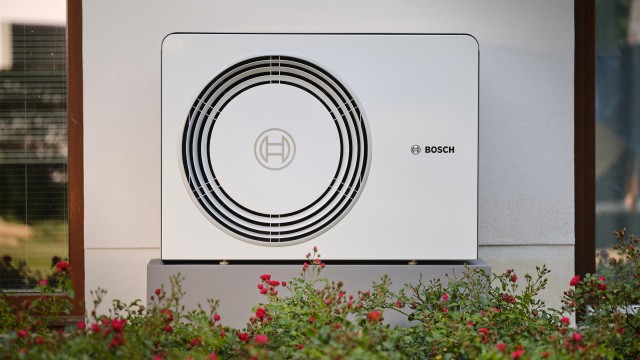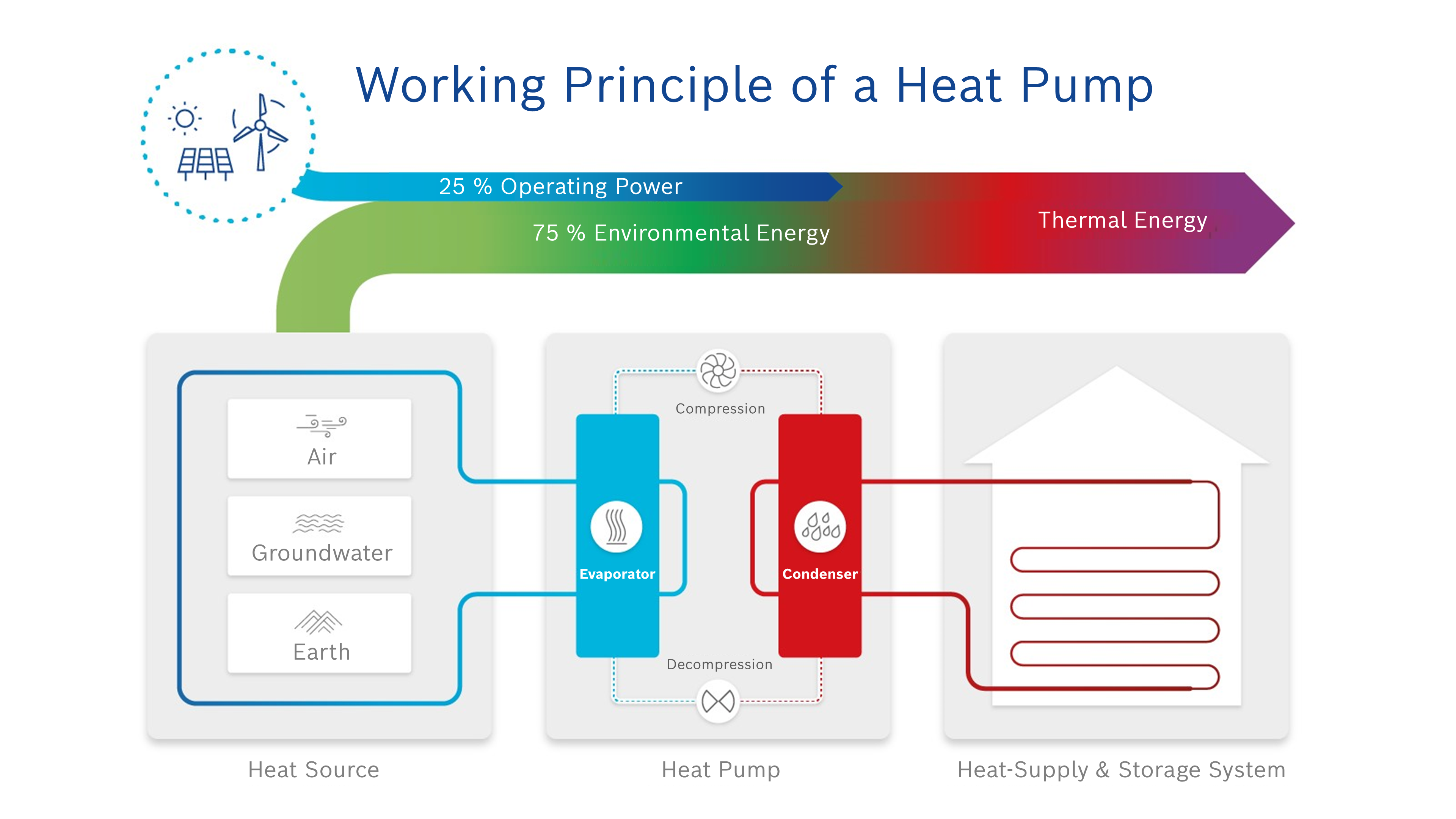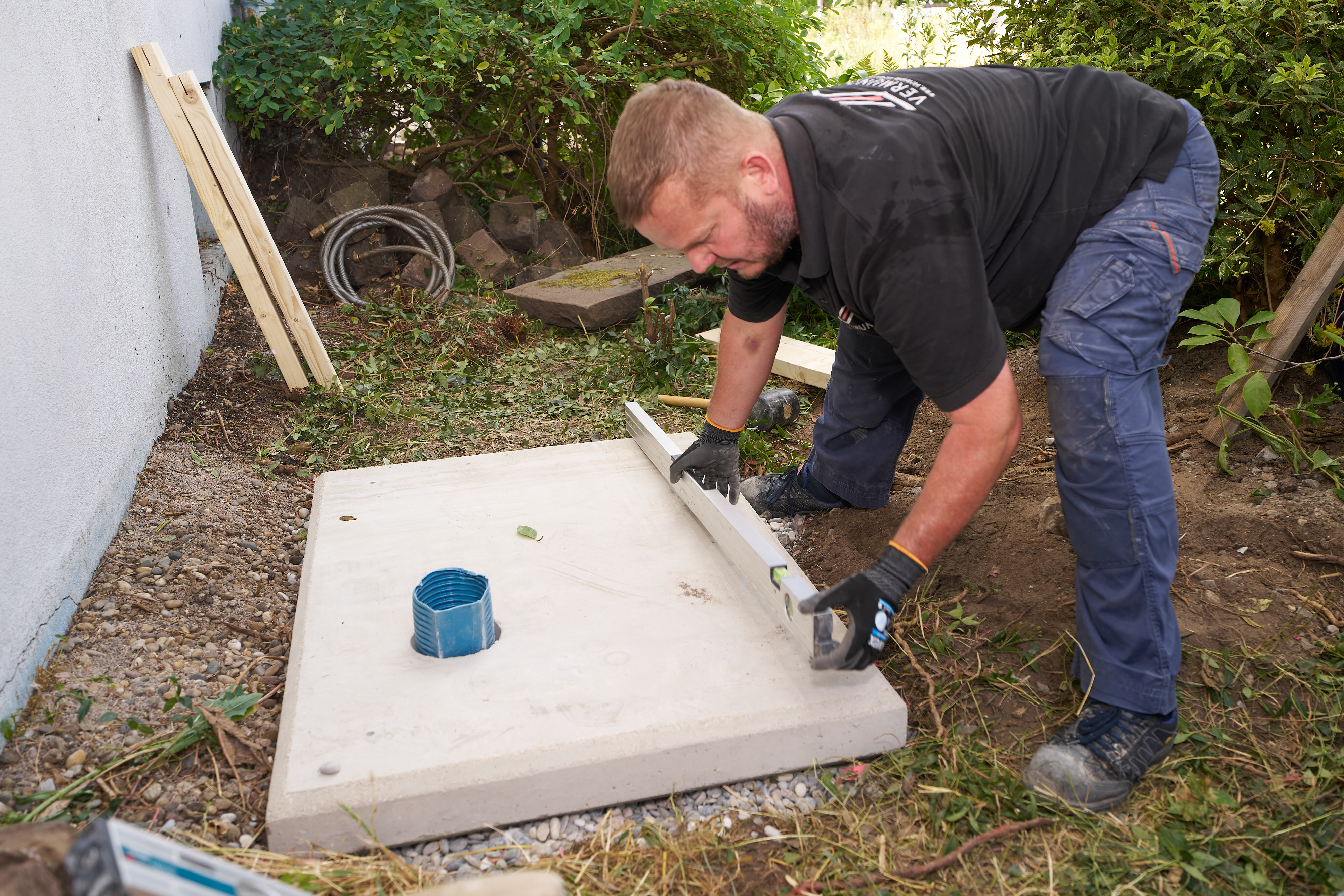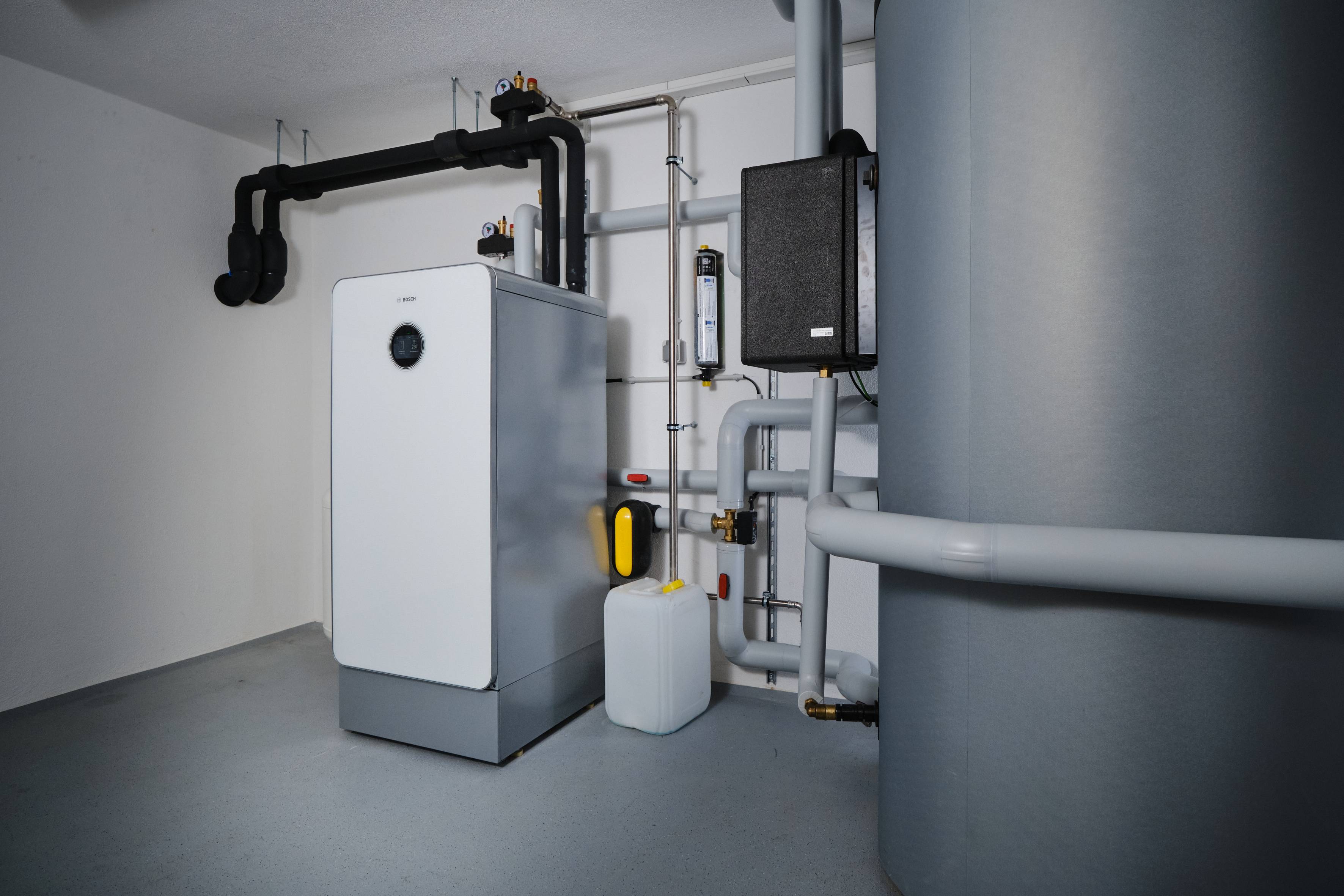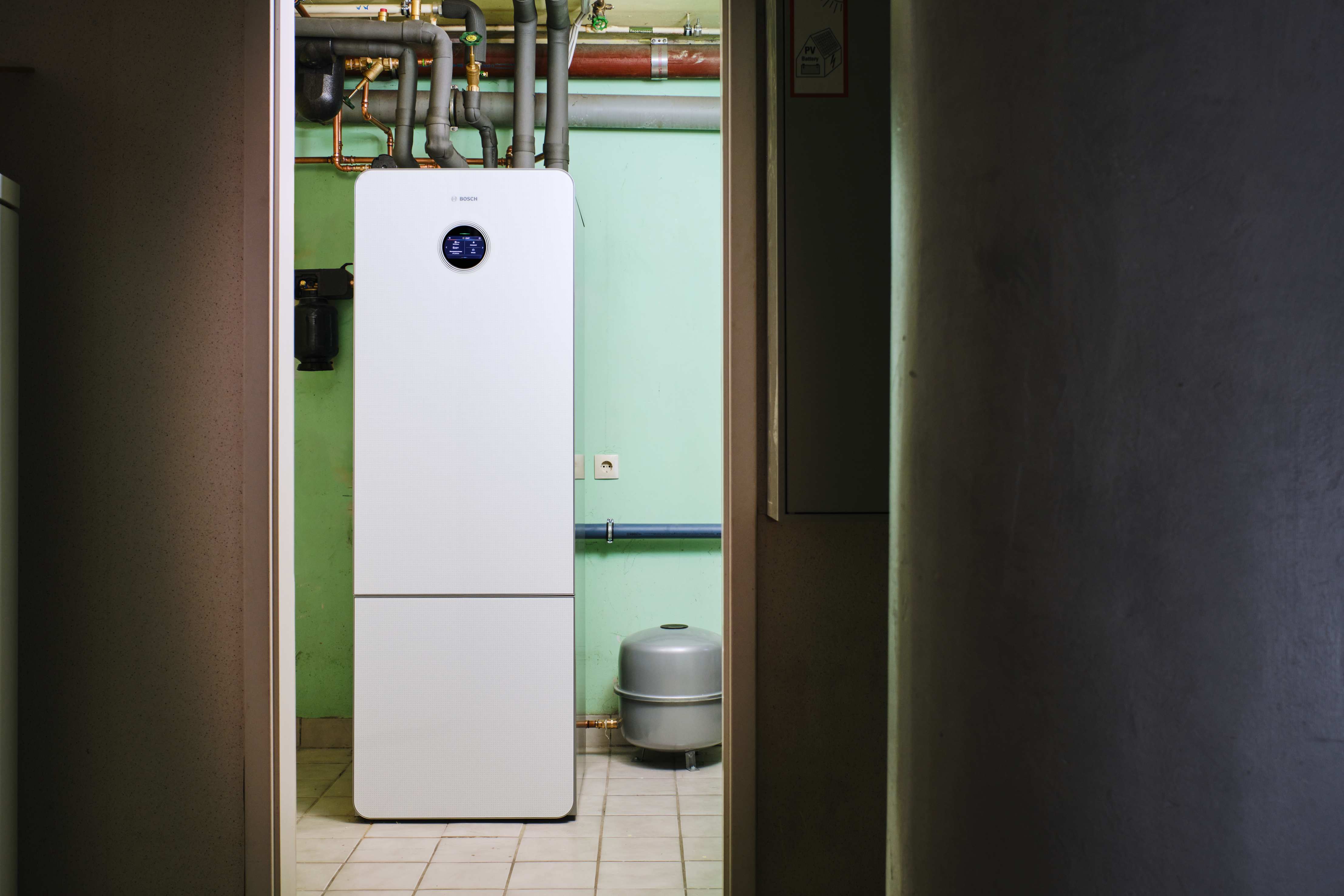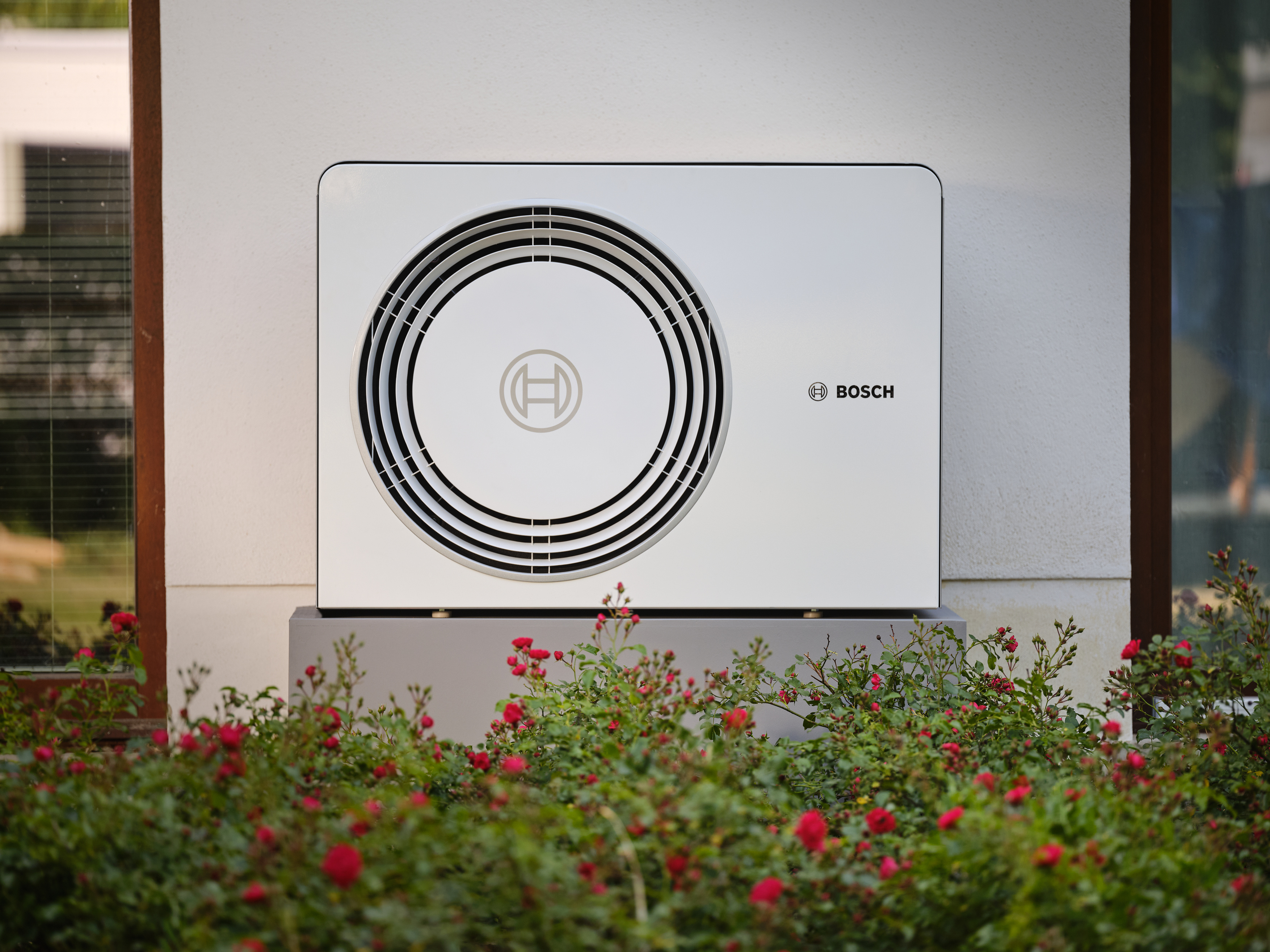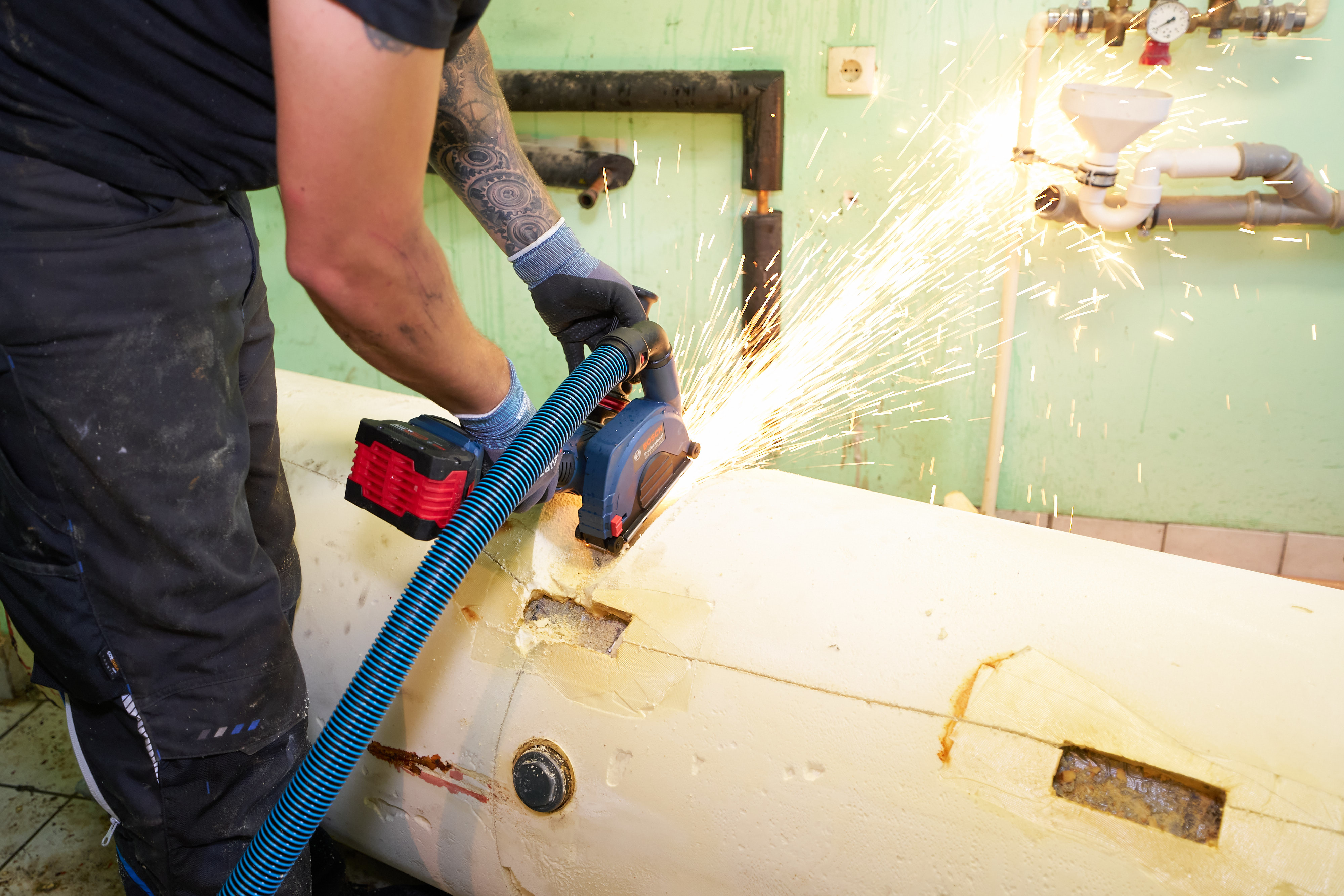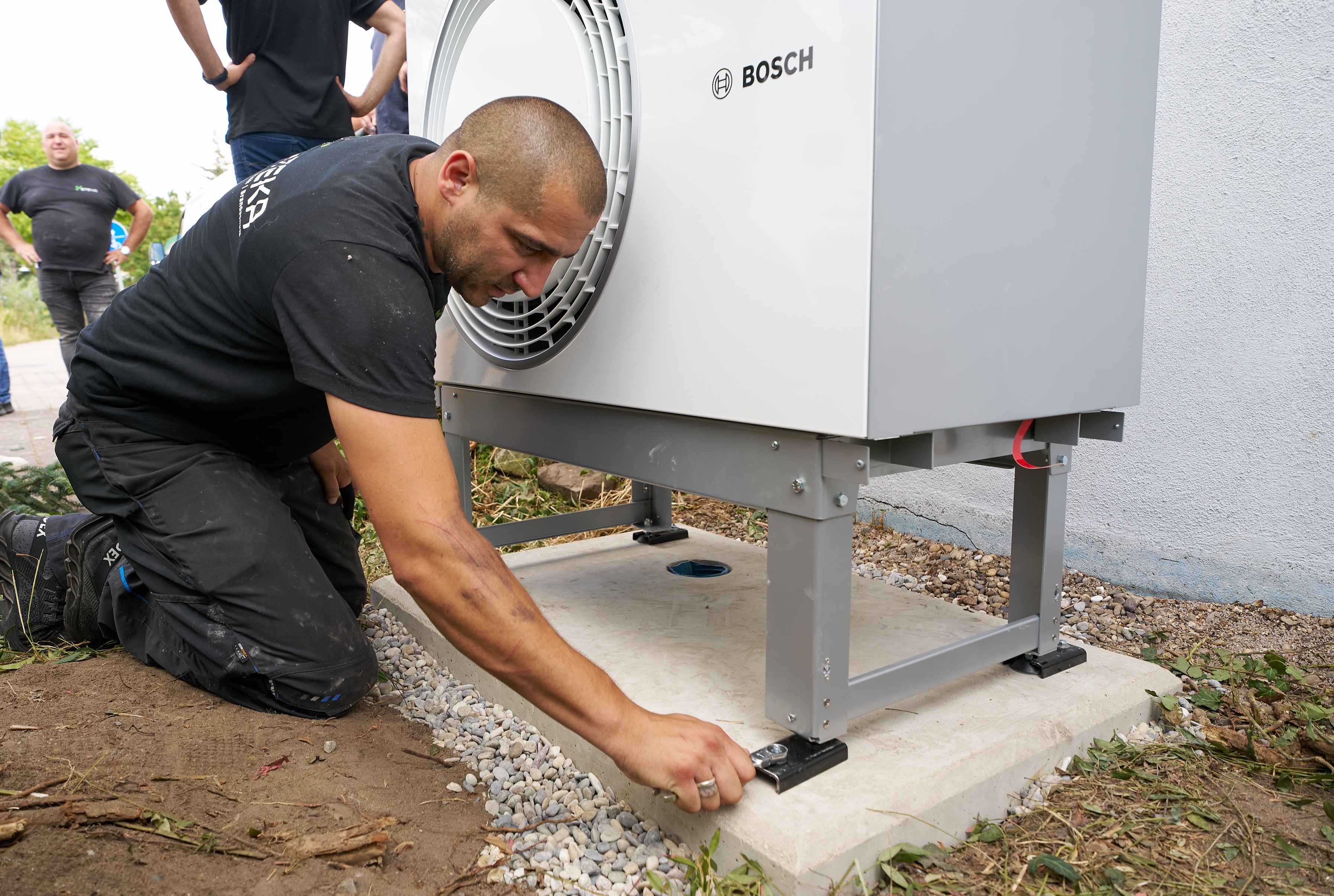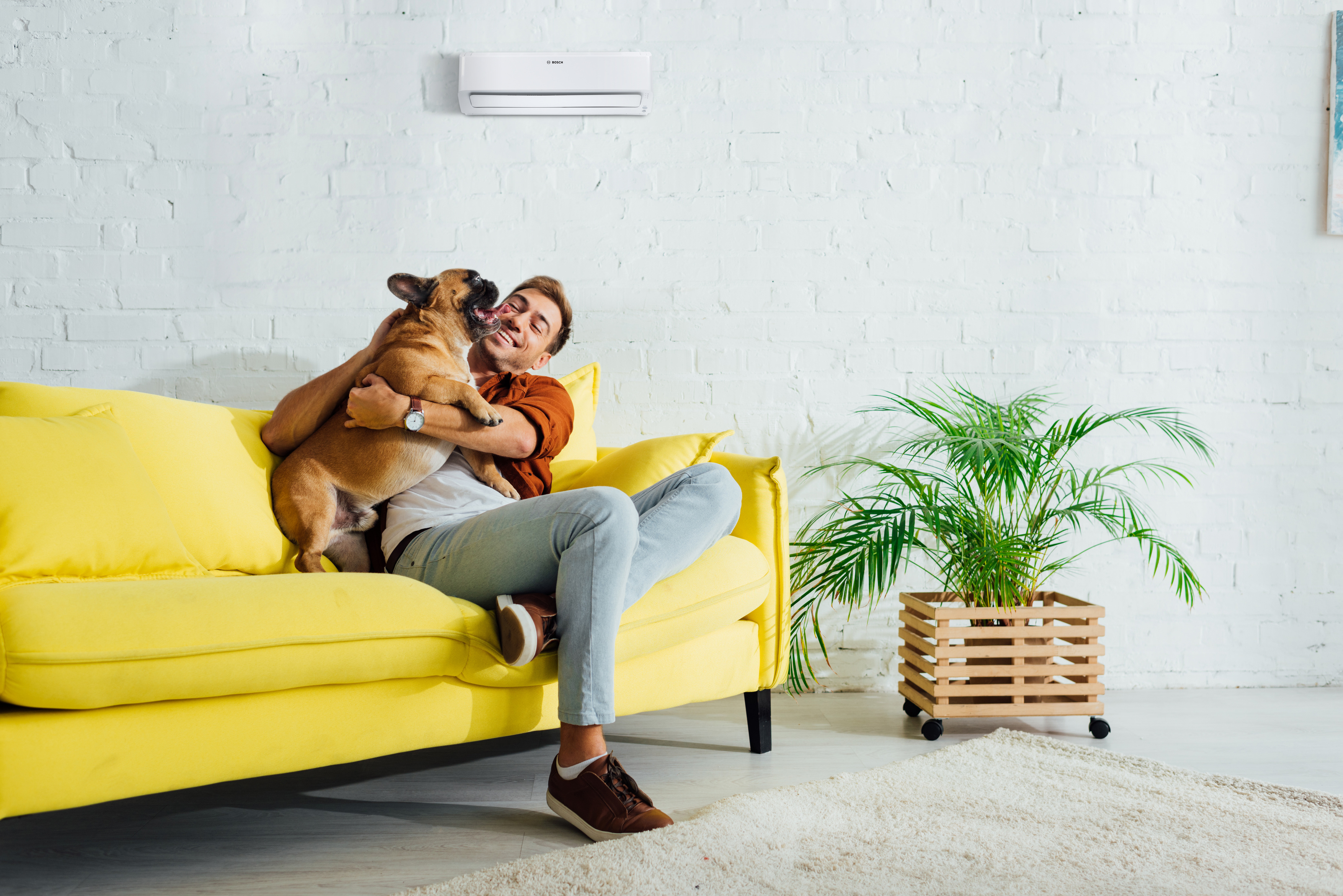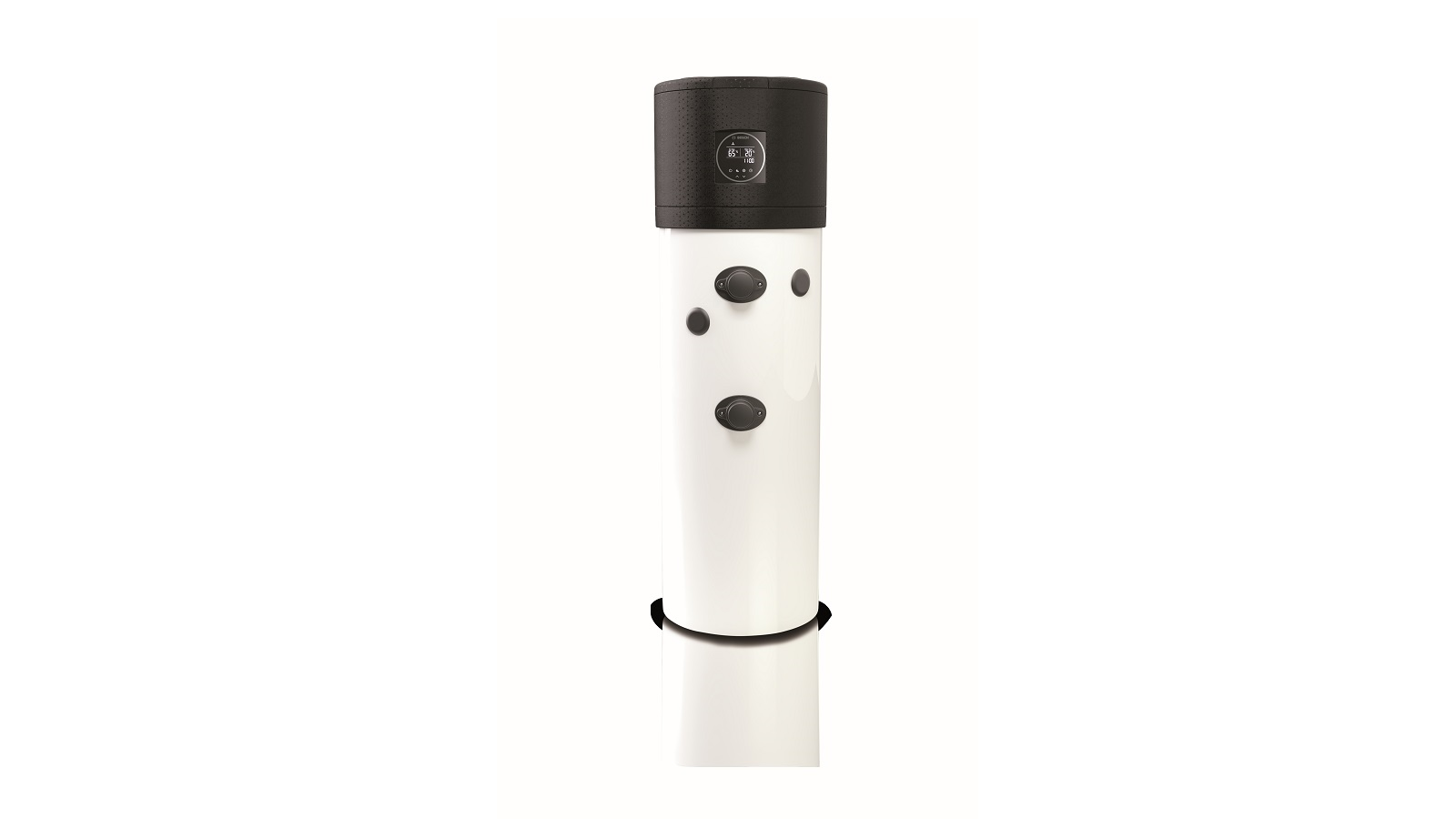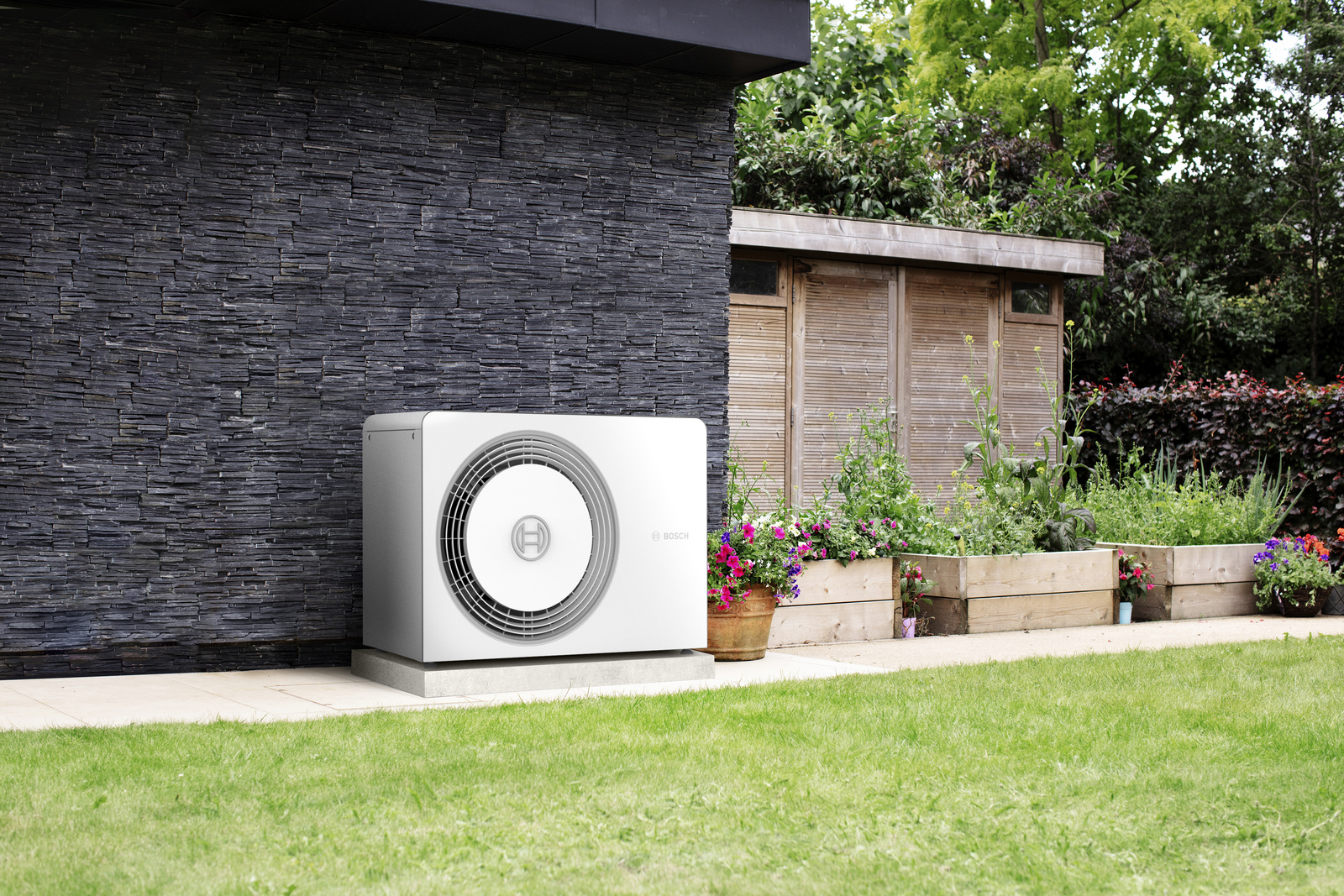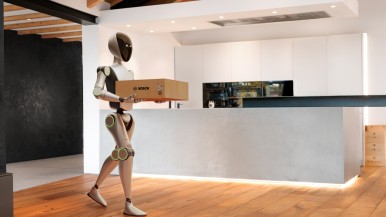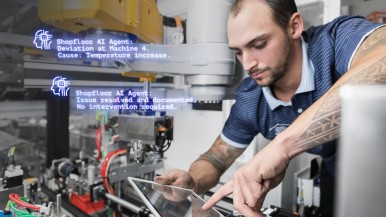| Heat pump types | All heat pumps work in a similar way, using electricity to harness free ambient energy. Bosch offers a wide range of heat pumps that are particularly efficient depending on the application. These include a) air- to-water heat pumps, b) split air conditioners (air-to-air heat pumps), c) brine-to-water heat pumps and d) water-to-water heat pumps. |
| Use as hybrid systems | Many Bosch heat pumps can be combined with another heat generator such as a gas condensing boiler if required. These hybrid heat pumps are particularly suitable for existing buildings and are particularly efficient thanks to intelligent control that ensures the most appropriate heat generator is used at all times. |
Absorption, compression, release, decompression
The operating principle of heat pumps*
| Energy absorption | The ambient air contained in the energy sources air, water, and earth is used to heat a refrigerant. The refrigerant absorbs the ambient air and gradually evaporates. |
| Compression | The heated refrigerant is compressed by an electrically powered compressor, which heats up further, increasing the pressure. |
| Release | When the desired temperature is reached, a heat exchanger transfers it to the heating water. |
| Decompression | After the heat is released, the refrigerant is still under high pressure. The refrigerant is passed through an expansion valve and the process is repeated. |
*The operating principle applies to all heat pumps except air-to-air heat pumps (air conditioners). The latter distribute the heat to the rooms via the air rather than via a hot water circuit.
Air-to-water heat pumps
| Using ambient air with little effort | Air-to-water heat pumps from Bosch extract heat from the ambient air. They are suitable for both new and existing buildings and reliably meet the heating and/or hot water requirements of single or multi-family houses. |
| The refrigerator principle | An air-to-water heat pump works according on the same principle as a refrigerator – only in reverse. In the air-to-water heat pump, the outside air is drawn in by an integrated fan and meets a refrigerant that evaporates. The air-to-water heat pump uses one kilowatt hour of electricity to produce many times that amount of thermal energy. In this way, new and renovated buildings can be fully heated all year round and hot water can be reliably provided without the need for an additional heating system. |
| Split and monobloc heat pumps | In monobloc heat pumps the technical components for heat generation are located within one unit. In split heat pumps the process takes place in two separate units. Both systems work on the same principle, only the construction is different. Air-to-water heat pumps can not only provide heat, but also provide efficient cooling in summer. |
Split air conditioners (air-to-air heat pumps)
| Using the ambient air as an energy source | A split air conditioner uses energy from the ambient air, i.e. that it cools and heats a building without radiators. |
| Operating principle of split air conditioners | Split air conditioners extract energy from the environment and transport it to the place where it is needed, e.g. the living room. The term air source heat pump covers both split air conditioners (air-to-air heat pumps) and air-to-water heat pumps. Both extract heat from the surrounding air. |
| Especially efficient when combined with heat recovery ventilation | Unlike air-to-water heat pumps, air-to-air heat pumps do not transfer the heat to the rooms via a hot water circuit, but via the air. Heating systems with air-to-air heat pumps are therefore also called ventilation heating systems; they do not require radiators or heating surfaces. Air-to-air heat pumps can be part of a heat recovery ventilation system. In this case, the hot exhaust air is used as an energy source. In reverse mode, some air-to-air heat pumps can also cool. |
Brine-to-water heat pumps
| Extracting heat from the ground | These heat pumps are called brine-to-water heat pumps because a heat transfer fluid (brine) taps the earth as an energy source. As the heat is extracted from inside the earth, these systems are also known as geothermal heat pumps or geothermal heating systems. The visual advantage is that there is no need for external heat generating equipment. |
| Heat from a probe borehole a or a surface collector | In brine-to-water heat pumps, the brine circuit extracts the heat from the ground. This requires probe boreholes or surface collectors in which the brine circulates. The water/salt mixture is a good heat transfer medium and is environmentally harmless. At the heat pump's evaporator, the energy from the brine is transferred to the refrigerant circuit. A compressor compresses the refrigerant, causing its temperature to rise. |
| Efficient and economical cooling possible in summer | A major advantage of brine-to-water heat pumps is that they can be used for cooling in the summer. In ‘reverse mode’ the system dissipates heat into the cool ground. The temperature gradient eliminates the need for compression. The result is efficient and economical air conditioning that regenerates the ground through heat dissipation. |
Water-to-water heat pumps
| Efficient thermal energy from the groundwater | A water-to-water heat pump – or groundwater heat pump – extracts thermal energy from groundwater by means of two wells. The thermal energy can then be used for heating or hot water generation. Water-to-water heat pumps are very efficient. |
| Using the underground groundwater reservoir High heat output thanks to constant groundwater temperature | While air source heat pumps draw in the ambient air via fans, and geothermal heat pumps use the earth’s heat via probes or surface collectors, water-to-water heat pumps make use of the underground groundwater reservoir. The temperature of the groundwater is largely constant throughout the year, so the heat pump provides high heating output in both summer and winter. Water-to-water heat pumps can achieve efficiencies of around 500%, which corresponds to a seasonal coefficient of performance (SCOP) of 5. |
| Using two wells | In a water-to-water heat pump, the suction well sucks in the groundwater to extract heat, while the injection well returns the used cold water to the ground. |
